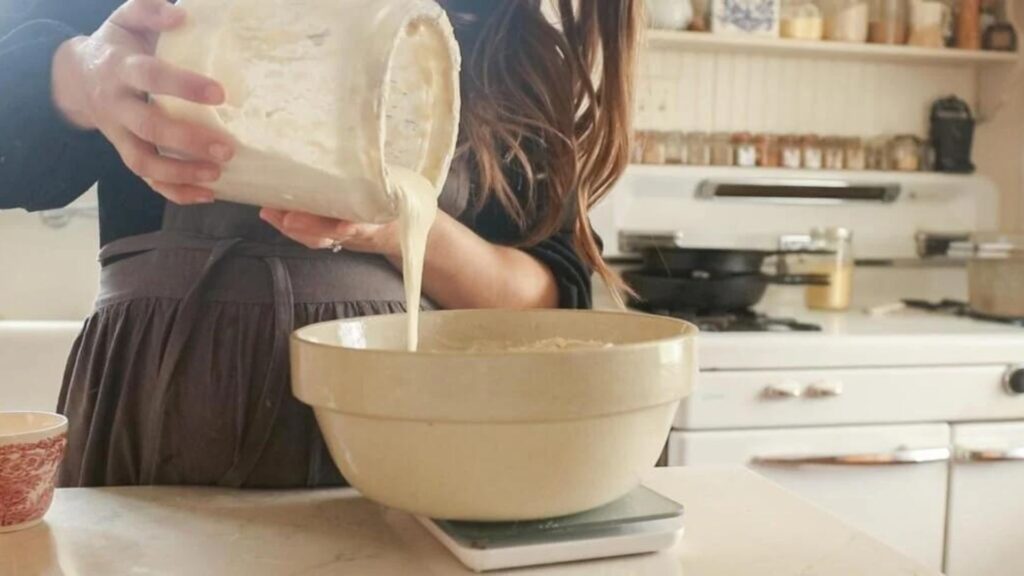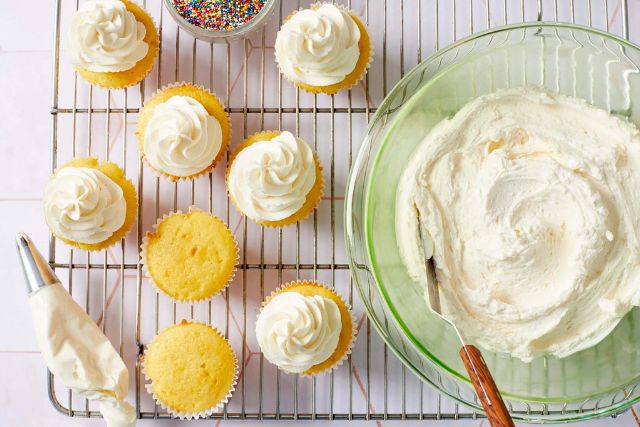Sourdough Bread Without a Starter : A Step-by-Step Recipe Guide
In recent years, sourdough bread has surged in popularity, captivating home bakers and food enthusiasts alike with its distinctive tangy flavor and rustic appeal. Traditionally, sourdough bread is made using a starter—a fermented mixture of flour and water that contains wild yeast and bacteria. However, creating a sourdough starter requires time and patience, which can be daunting for beginners or those looking for a quicker baking experience. Fear not! You can still enjoy the delicious taste of sourdough bread without the need for a starter. In this comprehensive guide, we will walk you through a straightforward recipe for making sourdough bread without a starter. Whether you’re new to baking or simply looking to streamline the process, this recipe will help you achieve a beautiful loaf with that signature tangy flavor.
Understanding Sourdough Bread Without a Starter
Sourdough Bread Without a Starter is distinct from other types of bread due to its fermentation process. The sour flavor comes from lactic acid bacteria, which thrive in the acidic environment created during fermentation. Traditionally, bakers harness wild yeast present in the air to leaven their bread through a starter—a mixture of flour and water left to ferment over several days.
Why Bake Sourdough Without a Starter?

While sourdough purists swear by their starters, creating and maintaining a starter can be time-consuming and requires regular feeding and care. Baking sourdough without a starter offers several advantages:
- Time Efficiency: Without a starter, you can bake sourdough bread in a fraction of the time—usually within a day.
- Simplicity: The recipe is straightforward and doesn’t require advanced baking skills or specialized equipment.
- Consistency: Achieve a reliable sourdough flavor and texture without the variability that can come with managing a starter.
Ingredients for Sourdough Bread Without a Starter
Before you begin, gather the following ingredients:
- 500g bread flour (all-purpose flour can also be used)
- 350ml lukewarm water
- 10g salt
- 7g instant yeast
- Optional: seeds or grains for added texture and flavor
Step-by-Step Recipe for Sourdough Bread Without a Starter
Step 1: Mixing the Dough
- Combine Dry Ingredients: In a large mixing bowl, whisk together the flour, salt, and instant yeast until evenly distributed.
- Add Water: Make a well in the center of the flour mixture and pour in the lukewarm water.
- Mix: Using a wooden spoon or your hands, stir the mixture until a shaggy dough forms and all the flour is hydrated. The dough should be slightly sticky but manageable.
Step 2: Kneading
- Knead the Dough: Transfer the dough to a lightly floured surface. Knead the dough for about 10-15 minutes until it becomes smooth and elastic. This helps develop the gluten, which gives the bread structure.
- Rest the Dough: Place the dough back into the mixing bowl, cover it with a clean kitchen towel or plastic wrap, and let it rest at room temperature for 1 hour. This allows the dough to relax and rise slightly.
Step 3: Shaping
- Shape the Dough: After the resting period, transfer the dough to a lightly floured surface. Gently shape it into a round or oval loaf, ensuring to create surface tension by pulling the dough towards you with your hands.
- Second Rest: Place the shaped dough onto a parchment paper-lined baking tray or a well-floured proofing basket. Cover it loosely with a kitchen towel and let it rest for another 1 hour at room temperature.
Step 4: Baking
- Preheat the Oven: About 30 minutes before baking, preheat your oven to 220°C (425°F). Place an empty baking tray on the bottom rack to preheat as well.
- Score the Dough: Using a sharp knife or a bread lame, score the top of the dough with shallow cuts. This allows the bread to expand and prevents it from bursting unevenly during baking.
- Bake: Transfer the dough (still on the parchment paper, if using) onto the preheated baking tray. Optionally, you can create steam in the oven by quickly pouring a cup of hot water into the empty hot baking tray on the bottom rack. This steam helps create a crispy crust. Bake for 25-30 minutes or until the bread is golden brown and sounds hollow when tapped on the bottom.
- Cooling: Once baked, transfer the bread to a wire rack and let it cool completely before slicing. This helps retain moisture and ensures the bread slices evenly.
Tips for Success
- Use Lukewarm Water: This encourages the yeast to activate without killing it, leading to better dough rise.
- Knead Thoroughly: Proper kneading develops gluten, which gives the bread its structure and chewy texture.
- Let it Rest: Both during and after shaping, allowing the dough to rest helps develop flavor and improves the bread’s texture.
Baking sourdough bread without a starter is a rewarding experience that yields delicious results without the commitment of maintaining a starter. By following this step-by-step guide, you can enjoy homemade sourdough bread with its characteristic tangy flavor and chewy texture in just a few hours. Experiment with different flours, add-ins, or baking techniques to customize your loaf to perfection. Happy baking!
FAQs Related to Sourdough Bread without a Starter
What is sourdough bread without a starter?
Sourdough bread without a starter refers to a variation of sourdough bread that skips the traditional fermentation process using a sourdough starter. Instead, it uses commercial yeast for leavening, allowing for a quicker baking process.
How does sourdough bread without a starter taste compared to traditional sourdough?
While it lacks the depth and complexity of flavor that comes from natural fermentation in a traditional sourdough starter, sourdough bread without a starter still has a mild tanginess. The flavor will be less pronounced and more uniform compared to sourdough made with a starter.
Can I use regular yeast for sourdough bread without a starter?
Yes, sourdough bread without a starter typically uses instant yeast or active dry yeast as the leavening agent. These types of yeast provide a quick rise and do not require the lengthy fermentation process of a sourdough starter.
How long does it take to make sourdough bread without a starter?
The process of making sourdough bread without a starter is much quicker compared to traditional sourdough. It generally takes around 3 to 4 hours from start to finish, including mixing, kneading, resting, shaping, and baking.
What flour should I use for sourdough bread without a starter?
You can use bread flour or all-purpose flour for sourdough bread without a starter. Bread flour will give you a slightly chewier texture, while all-purpose flour will result in a softer crumb. Some bakers also mix in whole wheat flour or other grains for added flavor and texture.
Can I make gluten-free sourdough bread without a starter?
Yes, you can make gluten-free sourdough bread without a starter using gluten-free flour blends and commercial yeast. Look for recipes specifically designed for gluten-free sourdough bread to ensure the best results.
How do I know when sourdough bread without a starter is done baking?
Sourdough bread without a starter is done baking when it is golden brown on the outside and sounds hollow when tapped on the bottom. You can also use a food thermometer to check that the internal temperature of the bread has reached around 190-200°F (88-93°C).
Can I add flavors or ingredients to sourdough bread without a starter?
Yes, you can customize your sourdough bread without a starter by adding ingredients such as herbs, seeds, dried fruits, or nuts during the mixing or shaping stages. Experiment with different combinations to create unique flavors.
How do I store sourdough bread without a starter?
To keep sourdough bread without a starter fresh, store it in a paper bag or loosely wrapped in a clean kitchen towel at room temperature for up to 3 days. For longer storage, wrap it tightly in plastic wrap or foil and freeze for up to 3 months.
Can I use sourdough bread without a starter to make toast or sandwiches?
Yes, sourdough bread without a starter is perfect for making toast, sandwiches, or enjoying on its own. Its mild tangy flavor and soft texture make it versatile for various culinary uses.






